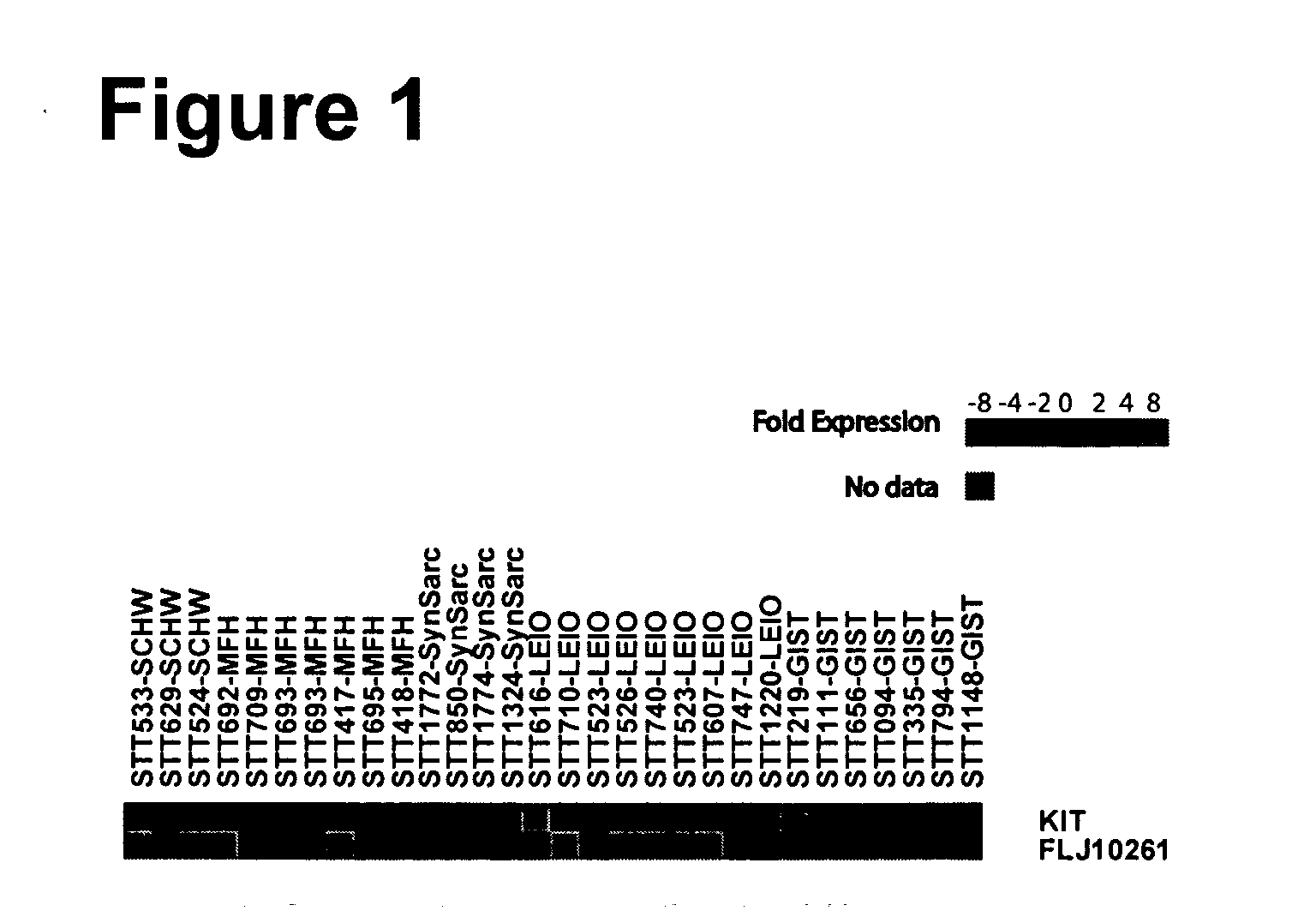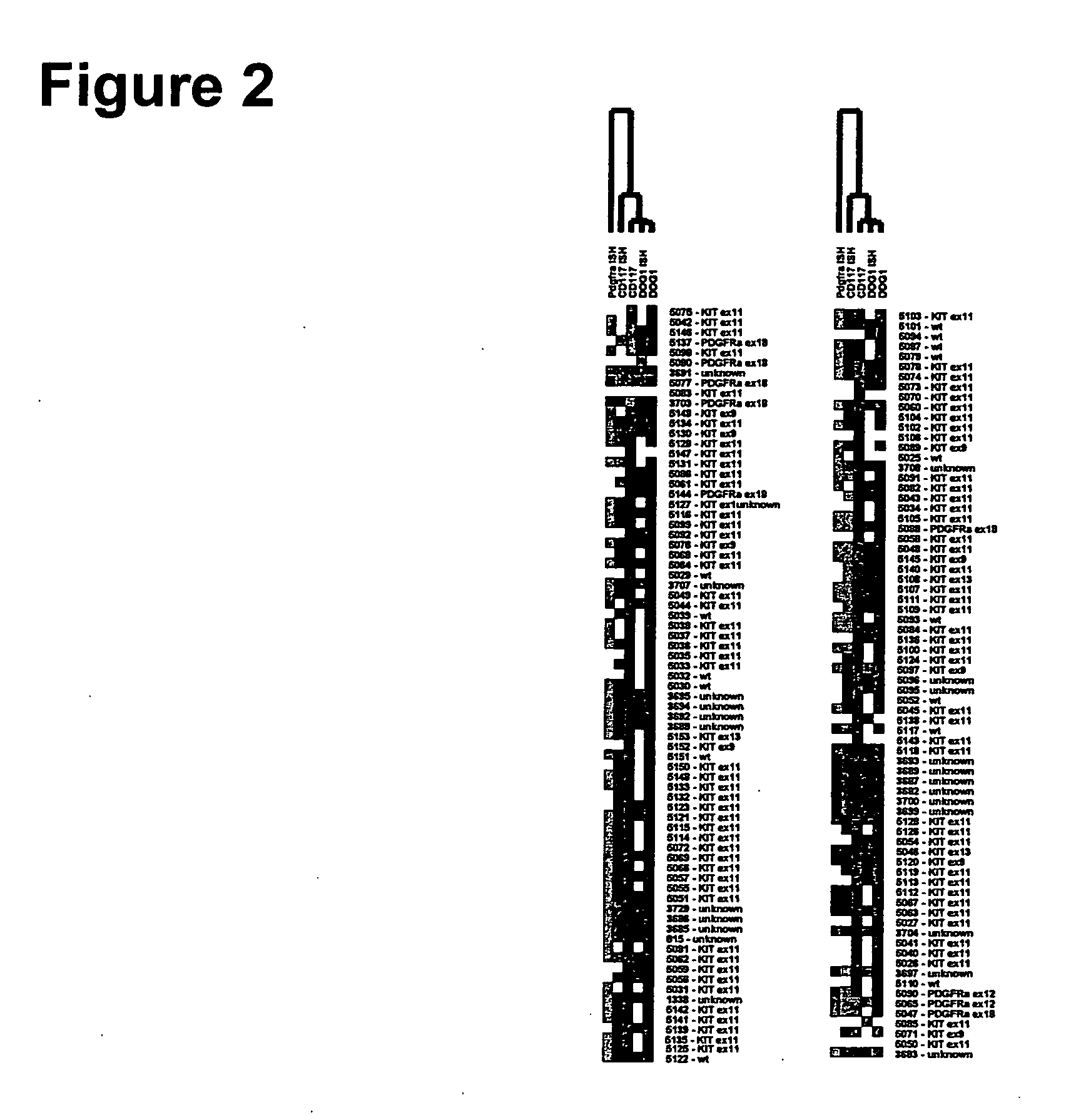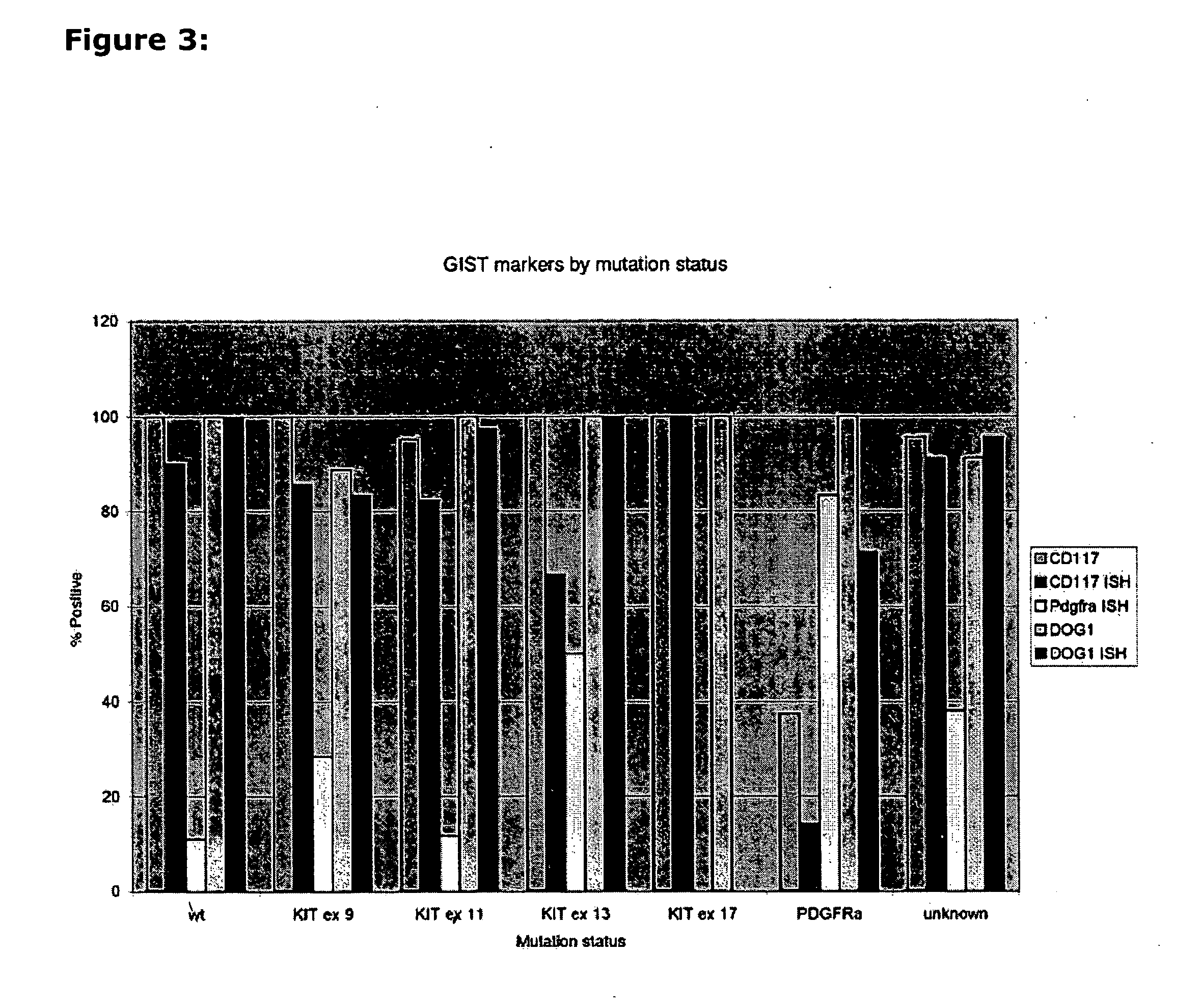Tumor markers and uses thereof
a technology of tumor markers and markers, applied in the field of tumor markers and their use, can solve the problems of limited understanding of the underlying differences in gene expression and mutations that may contribute to the tumor phenotype, and serious limitations in the applicability of the applicability of the applicability,
- Summary
- Abstract
- Description
- Claims
- Application Information
AI Technical Summary
Benefits of technology
Problems solved by technology
Method used
Image
Examples
examples
Materials and Methods:
Tissue Microarrays
[0111] The studies described here were performed with the approval of the Institutional Review Board at Stanford University Hospital. Two tissue microarrays (TMAs) were used for this study. The first TMA contained 460 different soft tissue tumors from 421 patients, with each tumor represented by two cores. The samples were distributed over two array blocks that were constructed using a technique previously described19 with a tissue arrayer from Beecher Instruments, Silver Spring, Md. 0.6 mm cores were taken from paraffin embedded soft tissue tumors archived from the Stanford University Medical Center between 1995 and 2001. This array has also been used for characterization of Apolipoprotein D expression 20. The second TMA used GISTs that were obtained from the pathology archives of Oregon Health and Science University Hospital, the Portland Va. Medical Center and the Kaiser Permanente Northwest Regional Laboratory. This single-block array ...
PUM
 Login to View More
Login to View More Abstract
Description
Claims
Application Information
 Login to View More
Login to View More - R&D
- Intellectual Property
- Life Sciences
- Materials
- Tech Scout
- Unparalleled Data Quality
- Higher Quality Content
- 60% Fewer Hallucinations
Browse by: Latest US Patents, China's latest patents, Technical Efficacy Thesaurus, Application Domain, Technology Topic, Popular Technical Reports.
© 2025 PatSnap. All rights reserved.Legal|Privacy policy|Modern Slavery Act Transparency Statement|Sitemap|About US| Contact US: help@patsnap.com



